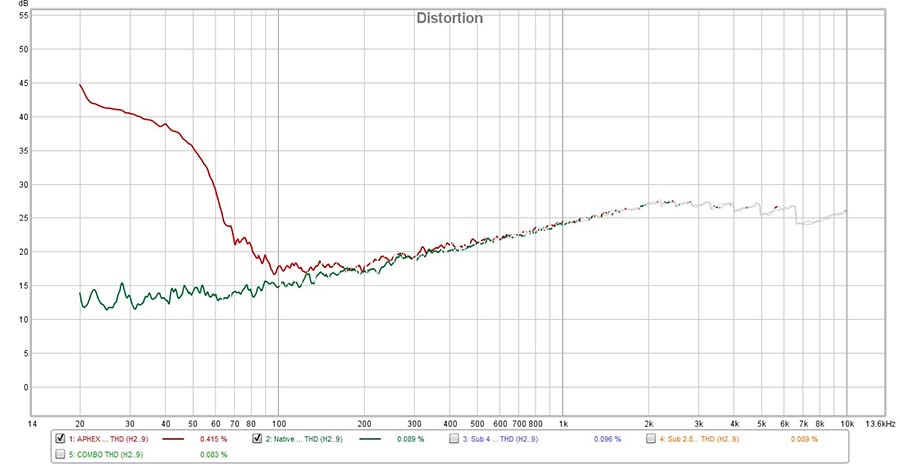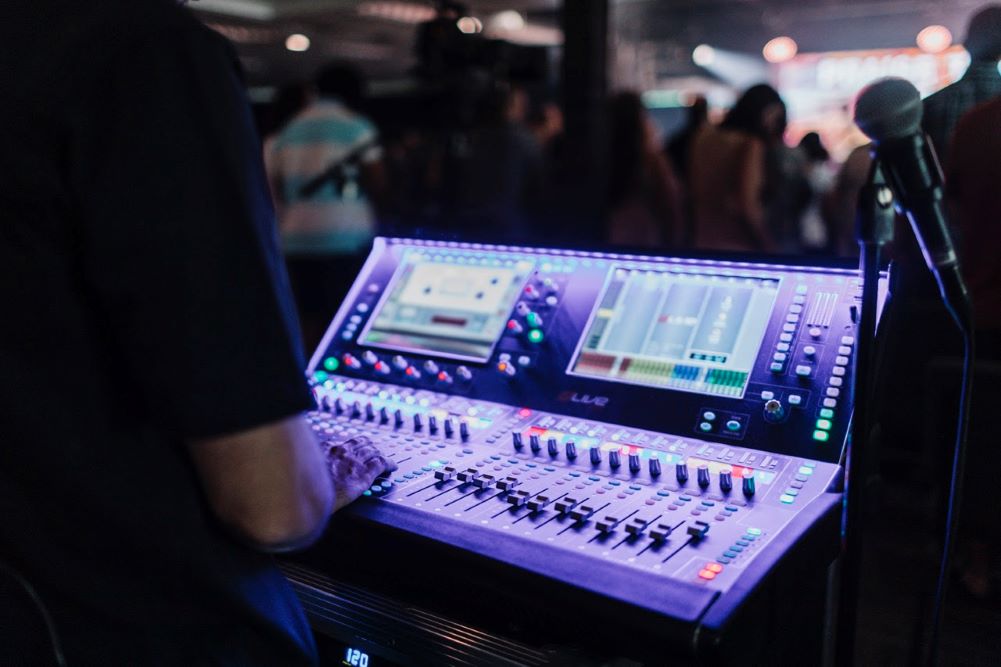Modern digital audio consoles generally still support the integration of outboard gear through insert points or bus send/returns. Back in the analog days, insert points were patch and play when connected to gear such as dynamics effects or other non-time-based effects. Time-based effects were – and still are – best used in a parallel configuration, and if the mix is 100 percent wet coming out of the unit, a small latency in the return signal caused by digital processing should not matter that much since a reverb or delay will arrive later than the dry signal anyway.
With digital consoles, any time we make the hop out of the internal processing and come back in, we’re introducing a signal that’s slightly behind the dry signal, even if the outboard piece of gear is completely analog. This is due to the additional DA/AD (digital to analog and analog to digital) conversion. There’s a manual way to measure the latency of an outboard path and I’ll present two examples here.
Remember that when two signals are combining at the same level but with different timing in a bus or a loudspeaker, the result will be comb filtering upon the combination. To avoid this, the two signals must be corrected to arrive in time with each other.
Here I’ll share a procedure to compensate for outboard latency through a digital signal processor, which is the heart of my home studio. The technique is the same for a digital mix console in a studio or live setting.
Upsides Of DSP
In the home studios of today, the music production suite can only be a part of a multi-purpose room. Instead of a console, it can be a big advantage to have a DSP to route and process all inputs and outputs. Some DSPs can even take the place of an audio interface and route straight from a computer or specific app to the hardware. Audinate Dante is a common interface replacement networking protocol (audio over IP or AoIP).
Mixing consoles have been the traditional unit for this role in the past, but there’s not always space for something like that, plus they don’t have near as precise processing as a system DSP does. Features found on a DSP that aren’t on most digital consoles are ultra-precise delay, all-pass filters and crossover filters, among other things.
Fortunately, at this point in time, DSPs are very affordable, especially if purchased used. Sites like eBay are great for this purpose – people pull perfectly functioning units out of real environments and put them up for sale for a fraction of the price they were new. By a fraction, I mean as low as 5 percent of the original cost, and they usually work perfectly well.
Example 1
I have a Biamp Nexia CS DSP in my studio; it has 10 inputs (with preamps) and 6 outputs. In addition to main and subwoofer monitoring, I’ve added a path that sends my VoIP (voice over IP) microphone through a Lexicon effects processor. This is referred to as the “wet” path.
That then sums with the internal or “dry” path at the output of the DSP, which goes directly into the computer through the interface for use in desktop apps. This keeps with the traditional routing scheme of running a (mostly) reverb and delay effect in parallel. The parallel routing enables me to bypass the effect through the DSP interface by shutting off the wet return signal. The unit has other effects, so I needed the wet signal to arrive in time.
To time align something like this is simple. I sent a sine sweep from my FFT (fast Fourier transform) measurement rig into the mic channel, through the processor, through the outboard gear into the processor again, and back into the analyzer. This is the same as using an FFT in the field for system tuning except that there’s no measurement mic involved (Figure 1).
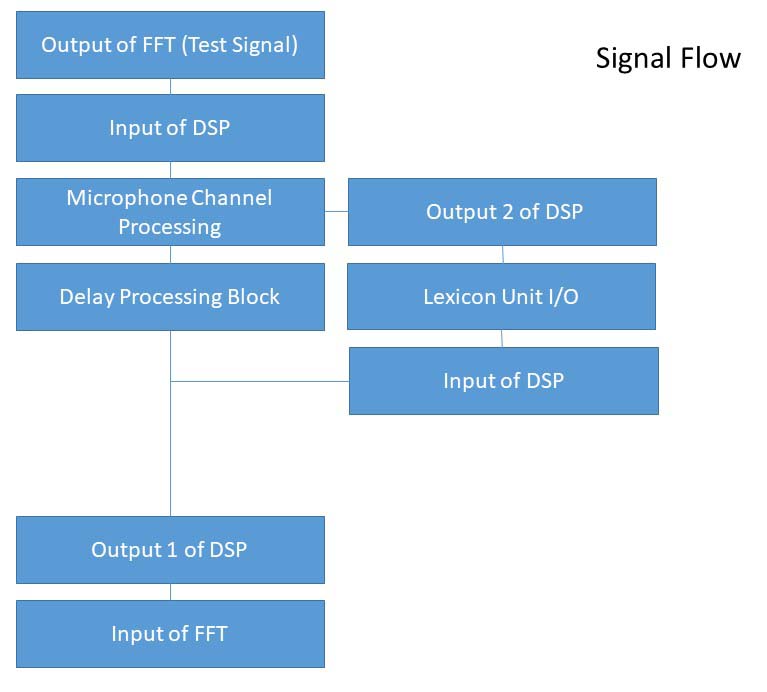
Next I muted the wet path and ran the same sweep through the dry channel that had a delay processing block inserted onto it. The FFT uses an impulse response to measure round trip time and it is accurate for this since the microphone channel is full range with very little low-frequency content. It was as simple as looking at the difference in round trip time and adding that delay to the dry mic path (Figure 2).
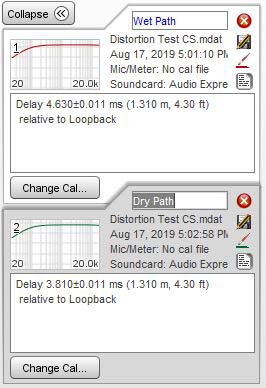
The dry signal arrived at the output sooner since it didn’t hop out of and into the DSP as many times. The analogy for a digital console would be running a mic channel directly to a bus, then to a main mix. Then running the same channel to a second bus, out to a piece of gear and back into a channel and to the main mix. You would add the delay to the internal bus (Figure 3).
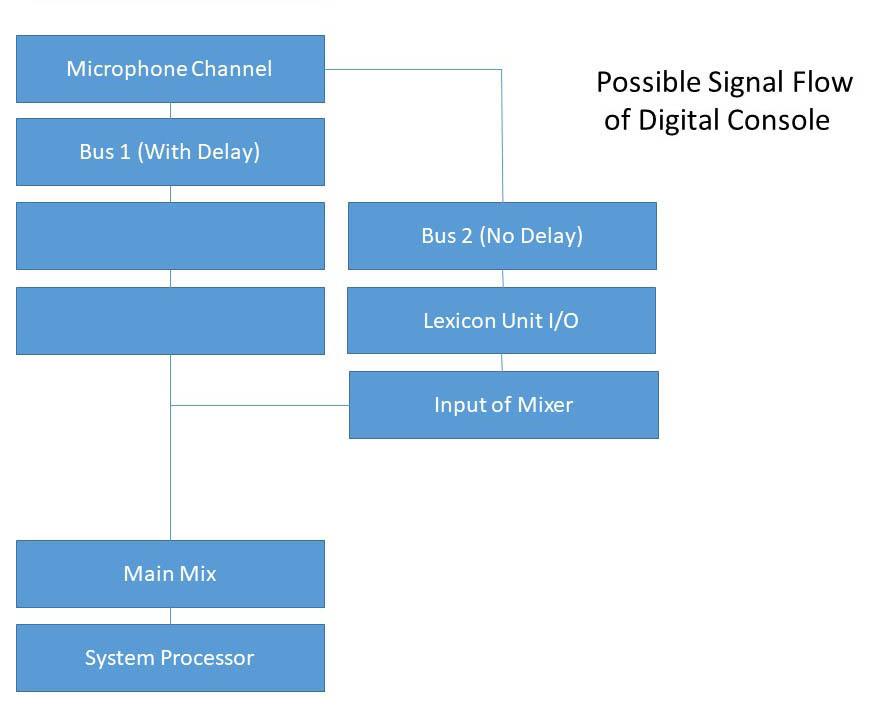
Example 2
Let’s move along to something that’s a bit trickier, starting with an analog unit in my studio, an Aphex 104 Aurel Exciter. Its claim to fame is that it adds deepness to bass signal without adding gain.
However, it does this through a type of distortion that I don’t want when doing a mix-down, so I decided to add this to the sub output in parallel, which makes it easy to mute its return or leave it up for a little “ear candy.” Additionally, with the matrix mixer in my DSP, I can record just the wet path through it if I’m working with material enhanced by that effect.
If I were to run this effect at a live show, traditionally it would be patched in via an insert point. Figure 4 shows the visual of the path that the sub signal takes on its way through the system. This path creates two additional hops through a DA conversion process, so the wet path is a bit late compared to the dry signal when it combines. This effect is only covering a limited range of frequencies, and when they combine at equal level, there’s actually a drop in combined level.
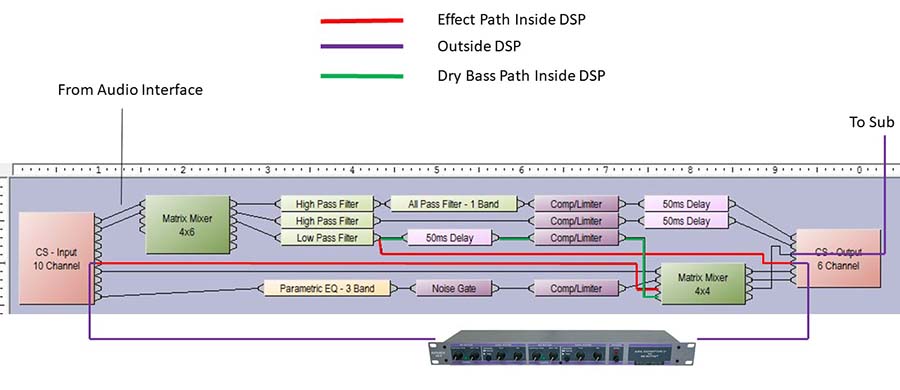
The method to measure the difference between the two paths is the same as above. Send test signal from the analyzer into the DSP, then through the Aphex unit return into the DSP, and then back into the analyzer. Mute that path and send test signal through the DSP and back into the analyzer.
The approach to correct this is similar to the process of phase aligning a main and sub crossover. The impulse response for the subwoofer frequency range (both paths in this case) can’t be used to find the delay offset. To align both paths, we need to look at the phase trace and match phase degree and slope angle.
This will flatten out the combing and provide maximum summation of the combined signal. It’s technically a type of crossover and is called an “overlap.” The reason it’s a crossover is because its coherent signal arriving at the same level and time offset.
Figure 5 shows the frequency response of both paths. The green trace is the unprocessed subwoofer signal and the red trace is the same signal after passing through the Aphex 104. Note that the Aphex path does indeed give a small boost. The red circles are where the two signals match exactly in level. Note that the range of interest here is about 32 Hz to 100 Hz.
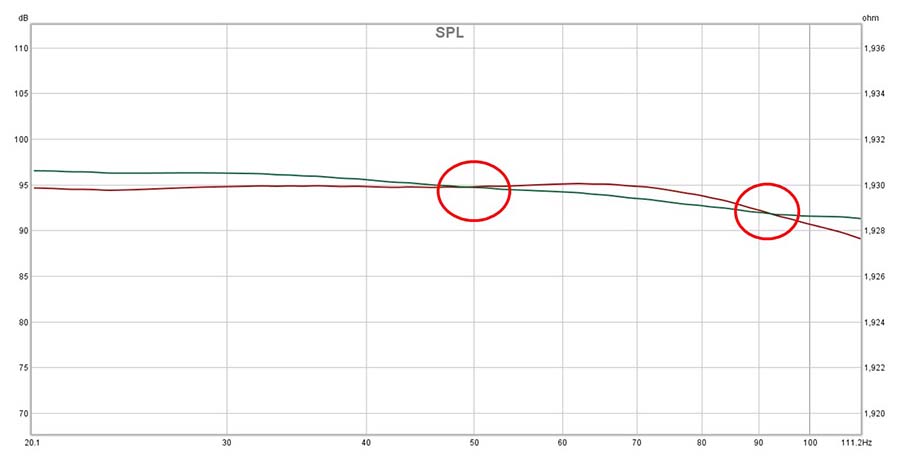
Figure 6 offers the phase traces – as we can see, the Aphex path arrives later. This is indicated by the steeper slope on the red trace. The goal is to get the (green) dry path’s phase to match the red as close as possible.
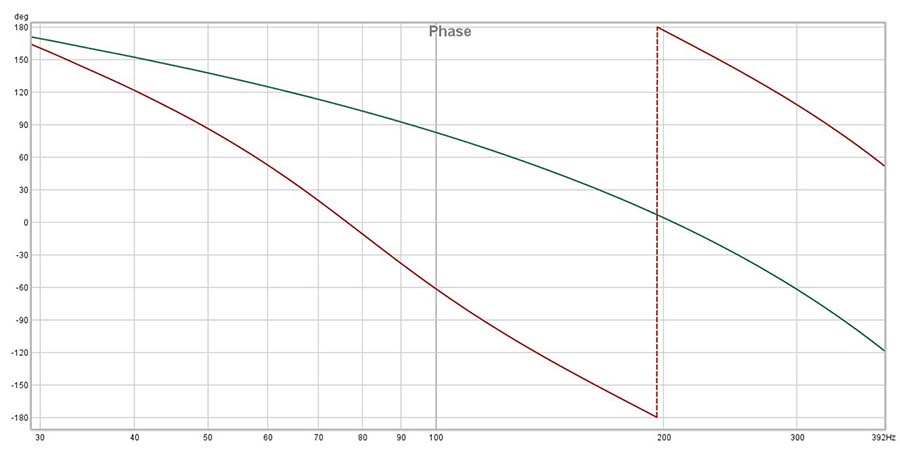
Finishing It Up
The starting point for me was to choose one of the two frequencies where the level is exactly the same (red circles) – either 50 Hz or 92 Hz. I chose 50 Hz because kick, bass and synth have more impact there. The degree difference in phase divided by 360 divided by the chosen frequency (50) is the formula to get delay time in seconds. The answer times 1,000 provides us with the time difference in milliseconds: 52/360/50 (*1000) equals 2.88 ms.
How much time you spend on getting the alignment as close as possible is up to you. For me, this is just an enhancement I patch in when I want to really feel the room shake so it doesn’t have to be extremely precise. The yellow trace in Figure 7 provides the new phase response with the 2.88 ms delay on the dry path.
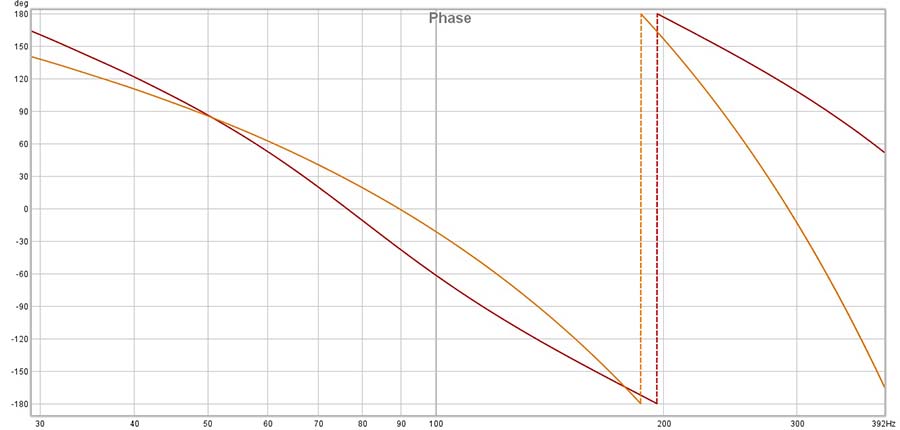
Now let’s combine the levels with both paths on at the same time (Figure 8). Bright green is the combo. I turned down the gain a bit on the wet path to only produce about 3 dB of summation when they’re both on, but what’s shown is the maximum that can be attained by phase summing.
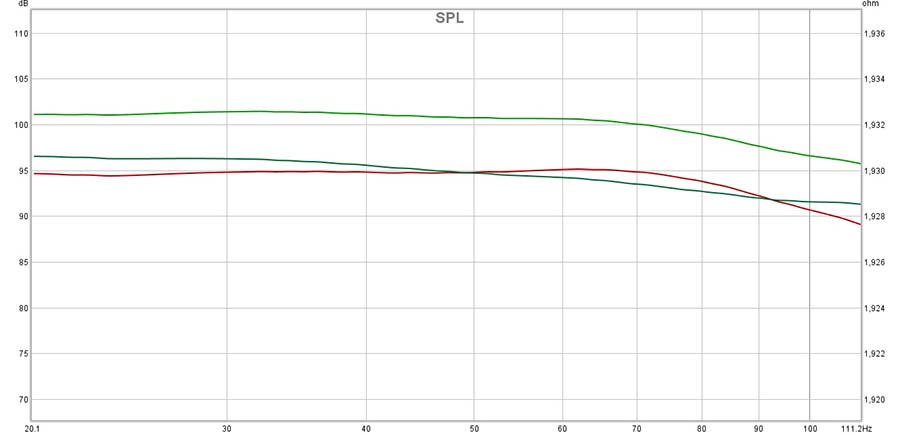
The final result is a cool effect. And if you were wondering how I confirmed that the Aphex 104 is a distortion effect unit, take a look at Figure 9.
